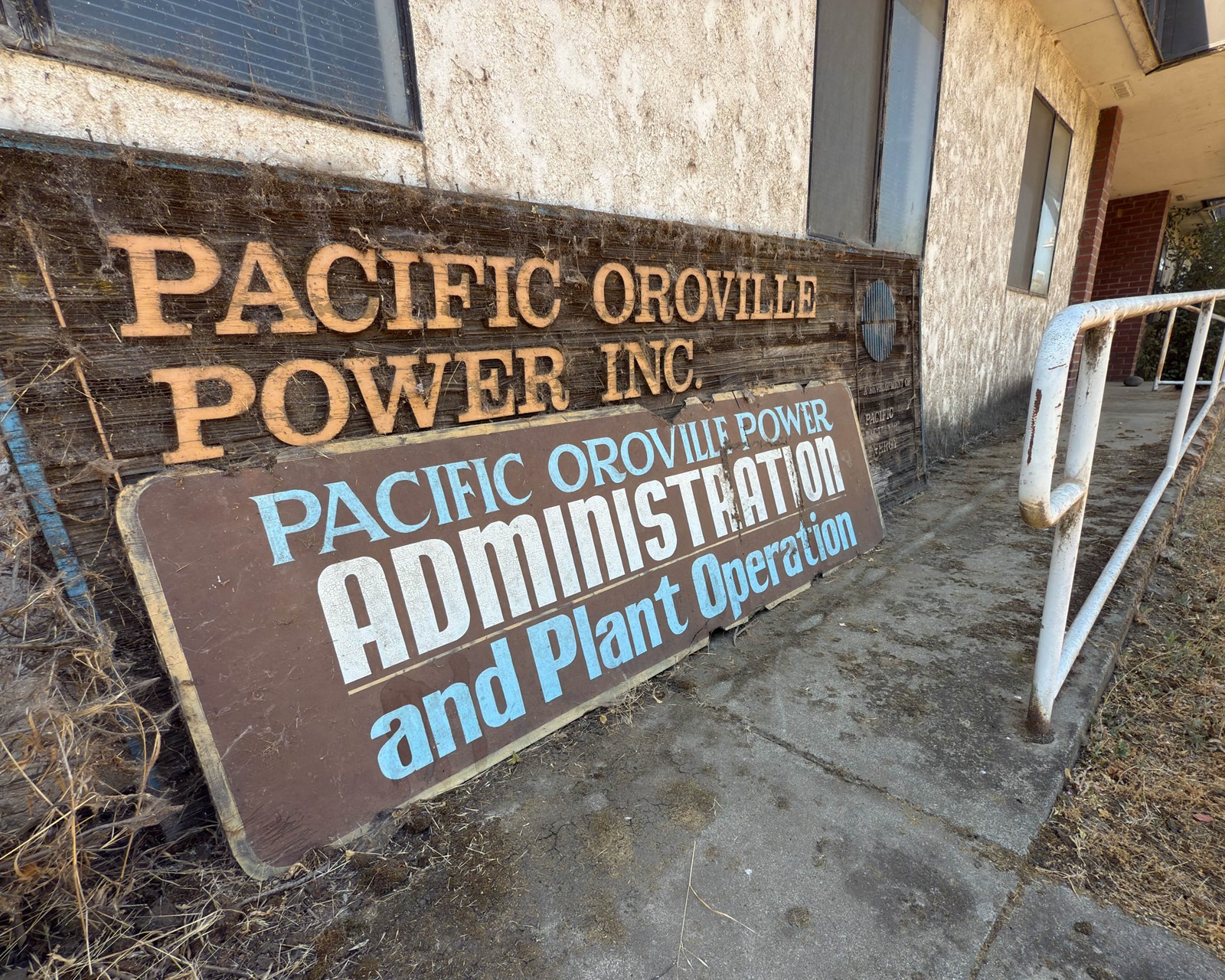
OROVILLE >> Plans to restart a biofuel energy plant on South Fifth Avenue in Oroville that closed in 2012 is poised to bring a “win-win” for the city by bringing a local microgrid to expanding developments and a local facility to process biofuel for fuel reduction projects.
The facility is planned to be revitalized with new equipment by by Butte Renewable Energy Inc., a joint venture between Albion Energy in Jersey, a British Crown Dependency; and Tubit Enterprises, a tree service company in Burney.
According to Oroville Community Development Director Patrick Piatt, the facility will operate above and beyond standards of the California Environmental Protection Agency and will be able to process locally produced biofuel, including biomass from fuel reduction.
Oroville Mayor David Pittman said he sees the new biomass plant as a “win-win” bringing a “bright future” to Oroville, that will help settle a factor considered in the city’s desire to expand — more available electricity.
“This power plant happens to be in Oroville; it’s a good thing and we appreciate the investment,” Pittman said. “The bigger thing is we gotta have more power on the gird, and if we can produce it locally and be able to tailor the costs down to help our big businesses keep their jobs and their location here, then so much the better.”
The current facility, at 3050 S. Fifth Ave. has not operated since 2012, according to Michael Spencer of Albion Energy. After construction is complete in 2028 to 2029, the new facility will have updated equipment, identical to equipment in the company’s power plant in the United Kingdom.
The city is seeking to schedule a public meeting to inform Oroville residents about the new plant, according to Piatt.
Spencer said his U.K. based company builds power plants internationally, and he found an opportunity in Oroville after seeing Butte County’s olive byproducts and trees ripped from orchards after their life cycle have ended.
“Oroville is one of the ideal locations to be a really good vanguard, the first, to demonstrate how a microgrid can work, support industry, growth, jobs, housing and all of the benefits that come with growing economy,” Spence said.
Construction
The first phase of construction beginning this year is set to build out a local microgrid, a battery system and solar panels with the intention of starting a city-owned utility and to bring power local neighborhoods, according to Michael Spencer of Albion Energy.
Piatt said the city will be working to form a public utility concurrently with the first phase of construction.
The second phase of construction is set to be complete 3 to 4 years and will revamp the existing facility within 3 to 4 years, according to Spencer.
Piatt said the biofuel plant will work with many other local industries, besides fuel reduction, to help process byproducts and divert landfill from agriculture waste and sewage treatment facilities.
“There’s also little problems, little quirks that companies have that they have been solving,” Piatt said. “They’re taking technology that’s tried and true in Britain, and then they’re extending those solutions over here.”
Local processing
Plans to bring the former plant back to life may help with processing fuel recovered from fire disasters and fuel reduction work, which, according to Piatt, is not available locally right now.
Tubit Enterprises owner Doug Lindgren has more than 30 years of experience supplying biofuel to power plants in Northern California, including biomass from fuel reduction projects with the Butte County Fire Safe Council.
Lindgren said his and other companies seeking to offload their fuel have backlogs which don’t have a local processing plant to go to, and he said that a new biofuel plant can help bring a local processing facility, which can save truck drivers a trip out of the county.
“It’s a massive bottleneck,” to not have a local facility, Lindgren said. “If they don’t stop here in Oroville, they have to continue driving down the road — out of county, Anderson is the closest, then Woodland.”
He said longer drives take more gas, which translates more cost and higher fuel emissions, “and on top of that, they’re full.”
The biofuel power plant is scheduled to be in operation within 3 to 4 years.
Lindgren suggested the facility can also help the state meet its goal for fuel removal work; he said many current fuel reduction projects simply stack fuel to decompose and in turn produce carbon emissions.
“It’s not removal, they just stack it there — and stacking it there is not completely taking care of the problem,” he said. “That is a big thing for these huge landscape fires that haven’t been treated — they’re emitting all day long. …
“That is a massive contributor (to emissions) because prior to the fire, they were sequestering. And now it’s this massive (release of carbon),” Lindgren said.


 PREVIOUS ARTICLE
PREVIOUS ARTICLE
